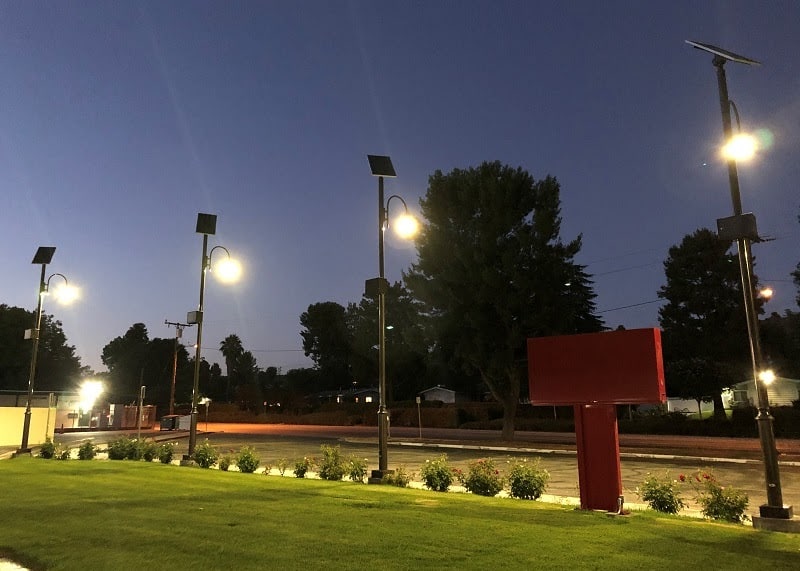
Starting Your New Year Off on a Biofriendly Note
At the start of every year, people all across the globe like to take a little time to figure out their New Year’s resolutions. While some may question whether this is worth the time and effort, I think taking a look at things you want to improve in your life or figuring out how you intend to make things in your environment better, is well worth it. So, if you are looking at making a New Year’s resolution or two, here are some ideas to help you start your year off on a biofriendly note.

Resolve to Get Outdoors More Often
Let’s face it, we’ve all probably made resolutions to exercise more in the New Year. While doing so may be fine, if you’re going to make a resolution on a more biofriendly note, how about resolving to get outdoors more often?
Countless studies have proven the benefits of being out in nature. In addition, with so many people adhering to stay at home orders or working from home during the pandemic, it’s essential you take the time to unplug and get outdoors.
You can even start the new year off right by doing a First Day Hike in one or more of America’s State Parks. Regardless of where you live, a first day hike is a perfect way to begin the new year and enjoy the benefits Mother Nature has to offer.

Make Minimizing Food Waste the Focus of Your Meal Preps
Minimizing food waste should be a major focus of all your meal preps in the new year. I mean, if these 17 companies can divert food waste to people in need, you can take a few, simple steps to lessen the amount of unused food you put in the trash.
Meal preparation begins with meal planning. First, take the time to figure out what you want to make for the next few days or week. Then, go buy the items (and in the amounts) necessary to make those meals. Doing this will allow you to cut down on the amount of food waste you’ll have, because you already figured out what you need for your meals.
Another way to minimize food waste is to regrow your food. For example, after you’ve cut up some green onion to add to your salad or main dish, you can place the roots into a cup of water to start growing more onions. In fact, here are 16 foods you can magically regrow from scraps.
[my_ad_code]
If you do end up with food scraps you are not going to consume, consider adding it to your compost rather than throwing it away. Food items can be quite beneficial to your compost pile and help your garden thrive. This is a much better use of food scraps than sending them to the trash.
In instances where you have more than you need, try canning or preserving for later. Home food preservation can go a long way towards minimizing food waste. It’s also a smart way to preserve food for times of the year when those food items may be unavailable.

Add Three R’s Into Your Daily Routine
Reduce, reuse and recycle are three R’s you are going to want to incorporate into your daily routine. By doing so, you’ll not only reduce the amount of waste you generate, but you’ll also save yourself quite a bit of money.
Simple ways to do this are to:
- Consider whether or not you actual need an item before you buy it.
- Figure out if you already have something else you can use for your intended purpose, rather than buying new.
- Before you throw something away, take a moment to figure out if you can reuse or repurpose it. If not, then can you recycle it? NOTE: This applies to food items too…you can always save leftovers for later, reuse ingredients for other meals and/or compost the rest.
- Educate yourself and your family on what items can be recycled. Then set up a recycling bin everyone can use.
- Plan out some DIY projects you can do throughout the year and vow to do them by only using materials you already have on hand.

Set a Goal for Your Energy and Water Conservation Efforts
Another simple way to start off your new year on a biofriendly note is to set goals for your energy and water conservation efforts. By deciding when and where you can conserve water or energy, you’ll save money and benefit the environment.
Start by setting your programmable thermostat. Programming set temperatures for different times of the day, for when you’re away, for varying seasons, etc. will allow you to not only cut energy costs, but to use less energy overall.
Try to heat/cool as naturally as possible. Opening windows will let stale air out and fresh air in. It will also help cool or heat your home, depending on the time of day and the weather. Pulling the blinds up on a sunny day can provide natural light as well as natural heat. Keeping your blinds down can help insulate your home and minimize the impact the outdoor environment will have on your home.
The key is to consider free, natural methods for heating, cooling and lighting before you opt for energy you need to buy.
[my_ad_code]
Another thing you’ll want to do is check for and remedy is leaks – both water and energy. Caulk up any windows where air is able to leak in or out. If you have air coming in under doors, you can put a towel at the base of the doors as a temporary solution to stop warm air from getting out and cold air in. Search for any water leaks under sinks, in the bathroom or shower and more. Call in a plumber if you need to, but get those leaks fixed. It’ll benefit the environment and your wallet.
Last, but not least, you should schedule your chores during off-peak hours. This means run your dishwasher or washing machine at the end of the night, or first thing in the morning, to cut down on energy cost. You should also make sure your appliances are full before you use them. This is one of the simplest ways to cut down on energy and water at the same time.

Vow to Swap Single-Use Plastics for Reusable
Single- or one-use plastics, while they may be convenient in the short-term, are not good for the environment by any stretch of the imagination. Luckily, you can vow to only purchase reusable, biodegradable and compostable items in the new year.
You can swap out a plastic, disposable toothbrush for a biodegradable one. Swap out plastic water bottles for stainless steel ones you’ll be able to use the whole year through. Switch from plastic utensils to compostable, edible or reusable ones. While the options are endless, your simple choice to go reusable makes all the difference.

Beginning the Year on a Biofriendly Note is the Perfect Fresh Start
It doesn’t take a lot, but beginning the year on a biofriendly note is the perfect fresh start. Let’s face it, if you can start your year off by focusing on minimizing your environmental impact, your actions will be far more likely to carry through the rest of the year. The actions we mention here are just a start. If you’ve got other ways you plan to start your year off on a biofriendly note, we’d love to hear them.



Post a comment